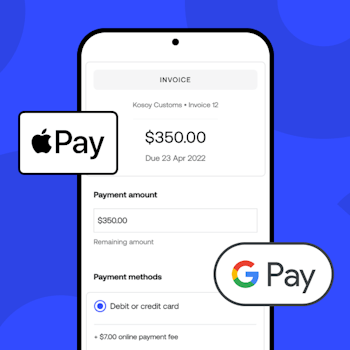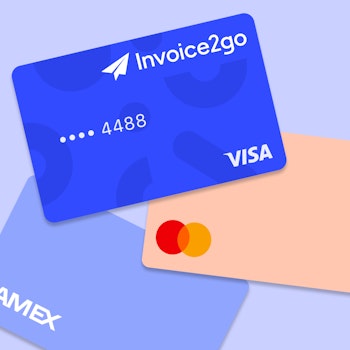
How to gracefully serve diverse customers
Let’s get straight to the point: diverse teams and inclusive businesses are more innovative, profitable, and safer for employees.
Whether you run a small business or freelance, you will work with customers of different ages, races, and cultural backgrounds. The way companies show up for their communities impacts how people spend their money. There's a moral reason and a business case for emphasizing inclusivity – regardless of your politics, how you handle diversity and inclusion affects your bottom line.
The best pathway for achieving professional success is to adopt an attitude of understanding and empathy to serve diverse customers effectively. But what does this mean in practical terms?
At Invoice2go, a Bill.com company, our goal is to do all we can to help your business be successful, whether we’re providing comprehensive, user-friendly tools or helping you to navigate complex social issues facing modern businesses.
Here are some valuable tips to help you serve customers of all walks more effectively:
Expand your understanding of diversity and inclusivity
Be conscious of the enormous scope of diversity. Diversity isn’t just people of different racial, religious, or cultural backgrounds. It encompasses age, nationality, gender, life experience, education, socio-economic background, core beliefs, and more.
Consider ways you could make your services more inviting for a wider audience. For example, improving your website accessibility makes it easier for you to do business with those who are visually impaired. Using straightforward language in your business writing avoids alienating customers and ensures that everyone understands your message.
Excellent resources to help you better serve a diverse customer base
The Small Business Administration (SBA) is an excellent place for free resources. The Office of Diversity, Inclusion, and Civil Rights offers resources like a primer on the Equal Pay Act, Civil Rights Act, and other legislation pertinent to inclusive hiring. It also provides an action plan for hiring persons with disabilities (PWD) and has tips on developing inclusive hiring practices and creating a culture of inclusivity in the workplace.
If you’re looking for some exercises to help you better connect with your target audience, check our free courses on building a personal and professional brand. You can also check out these helpful resources about cultural competency.
Be aware of your biases and assumptions
We all have biases based on our upbringing, education, and experience. They can be challenging to recognize because we’ve had them all our lives. It’s not easy to overcome biases developed over a lifetime, but it starts with awareness.
Commit to recognizing when you’re making assumptions about people based on stereotypes or past experiences and personal baggage that have nothing to do with the person in front of you.
Challenge your assumptions
When you begin to question why you have certain feelings or attitudes, you have the opportunity to break down barriers and approach individuals as a blank slate. This, in turn, allows you to learn, understand, and empathize with people on a case-by-case basis.
Your willingness to approach people openly can lead to better customer relationships because your clients are more likely to feel heard and validated. This connection will also likely raise their confidence in your ability to meet their expectations.
Embrace diverse hiring practices
Smart business owners understand the value of a diverse workforce. When people of different genders, identities, ages, races, ethnicities, cultures, religions, abilities, education levels, and socioeconomic backgrounds work together, it brings new perspectives to the table, creating an environment of inclusivity that drives creativity, innovation, and growth.
This can help you increase understanding and empathy and build better relationships with your workforce, suppliers, vendors, partners, customers, and community.
You’ll not only appeal to a broader audience, but you’ll also gain the ability to serve every customer better. When employees are properly empowered, a diverse staff makes your small business better in every conceivable way.
Create an inclusive work culture
As a small business owner, embracing diversity in the workforce can be difficult. With such a small workforce, you may struggle to attract diverse hires. While this can depend somewhat on your field and location, you may also be held back by your culture and communication style.
Creating a friendly and inclusive workplace through policies, procedures, and behavioral expectations is the best place to start. Check out this guide for more tips.
Listen to your customers’ stories to get diverse perspectives
Whether you’re a contractor offering home renovation services, a freelance artist creating website logos, or a catering company contributing to weddings and corporate events, the best way to serve your clientele is by listening and understanding what they want. Consider surveys or interview customers to learn more about them and how you can help them better.
Use empathy to build stronger customer relationships
Beyond approaching you for the professional goods or services you provide, your customers have a problem they need you to solve – and it usually has personal roots.
Sure, a homeowner might want to upgrade a kitchen to increase their property value, but that’s not their whole story. They also want a beautiful, functional space to create food and socialize with family or friends. Perhaps their home has a cultural element or some family nostalgia.
When you’re hired to create a company logo, you’re not just developing a symbol to represent a faceless business entity. You’re symbolizing the hard work someone put into their dreams of owning a business, improving their prospects in life, and perhaps creating a better future for their children.
When you understand the stories that drive your customers, you can develop a sense of empathy that inspires you to do your best, ultimately increasing customer satisfaction.
Recognize systemic barriers
Terms like “systemic racism” have taken on intensely divisive political weight. However, that doesn’t change that historically and presently, certain groups face struggles that others do not. For example, until 1989, women in the United States could not take out a business loan without a male cosigner. Today, there’s plenty of evidence that people of color face more significant struggles in securing funding to start a business.
Be aware that others have faced difficulties that you may not have. This informs who they are and how they approach the world. When you have appropriate empathy toward the suffering of others and the challenges they continue to face, you build stronger relationships and put yourself in a position to raise awareness and take action.
Review your business and consider your presentation
Consider whether the goods and services you offer appeal to – or exclude – certain groups. For example, you might naturally lean toward advertising with images of people who resemble yourself in terms of skin tone, dress, and other characteristics.
This is pretty natural, but it could convey that your business serves one segment of society. Changing your strategy to represent a more diverse cross-section of society can speak to a new audience within your community and appeal to a broader swath of potential customers.
Update your approach
Take some time to review your services and how you present your business and your brand. Consider the language and graphics you use and how they come across to different groups. Think about how accommodations like hours of operation might be exclusionary to specific groups.
Small changes in presentation go a long way in signaling your support and welcoming diversity.
Know when and where to refer
You can’t be everything to everyone, no matter how hard you try. Developing cultural competence and making efforts toward inclusivity are a great start, but there will be times in which you simply can’t offer what a customer needs.
What can you do in such situations? Know where to go. Research other businesses within your community that offer complementary services but appeal to different groups.
Begin to build a network of strategic partners to whom you can refer customers when they seek specialized services or resources. Sometimes, the best way to serve customers is to help them find what they’re looking for, even if it’s not you.
Advocate and maintain a positive mindset
When you start to understand the scope of work the world faces to overcome racism, bias, and a tendency toward exclusivity, you may feel overwhelmed. Just keep in mind that the diverse groups you want to uplift and support have been dealing with challenges like these for their whole lives.
Rome wasn’t built in a day, but each brick made a difference. The steps you take, small and large, serve to support your customers and community. This could even be as simple as identifying and addressing service gaps for specific groups.
It could mean changing your policies and how you represent your business. You might want to support and fund diversity-centric causes. Perhaps you’re interested in advocating for legal change.
With a positive attitude and a commitment to embracing diversity, you can improve your business, participate in reshaping your community, and perhaps even affect change far beyond your small corner of the world.
We have a diverse online community of freelancers and small business owners. Join us to connect with like-minded individuals and get more tips to help your business meet its goals.
Related Articles

How to accept credit card payments on Invoice2go in 3 simple steps

Accept payments online via Apple Pay and Google Pay

Must-not-miss write-offs as you wrap up 2022 year-end finances

5 ways accepting credit and debit card payments helps your business stay resilient

4 easy ways to increase cash flow today

What is Small Business Saturday and why is it important?
The features and surprising benefits of a well-designed packing slip
